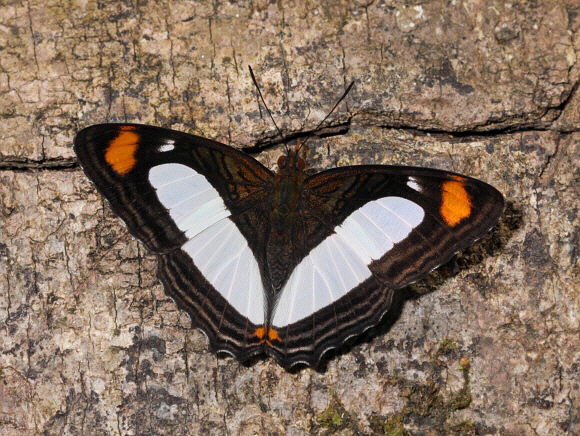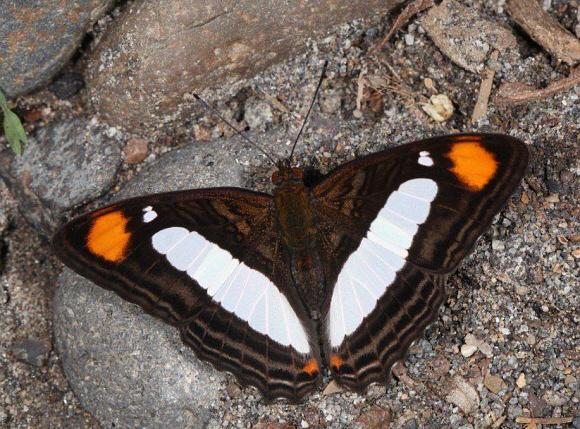
Introduction
Adelpha butterflies are colloquially known as ‘Sisters’. In terms of appearance they are reminiscent of the White Admirals ( Limenitis ) of Eurasia, and share with them a fondness for flitting gracefully around the lower branches of trees in the dappled sunlight of the forest.
There are 85 known species of Adelpha, all except two of which are confined to Central and South America. They are characterised by the distinctive black marbled pattern overlaid on a dark brown ground colour; and by having a broad orange or white band on the forewings. In the vast majority of species this band also extends vertically down to the tornus of the hindwings.
While it is easy to recognise the genus, determining the individual species can sometimes be very difficult – a problem exacerbated by misidentified museum specimens and mislabelled illustrations in many entomological books. The only reliable identification resource is “The genus Adelpha” by Keith Willmott. Accurate identification requires meticulous examination of the configuration of the orange markings in the subapical area on the forewing, and of the precise shape of the vertical bands. It is also essential in most cases to examine the patterning on the underside.
Adelpha thoasa is found in Ecuador, Peru, Bolivia and south-west Brazil.

Habitats
This species occurs in lowland and pre-montane rainforest at altitudes between about 200-1000m.
Lifecycle
I have no data specific to thoasa. The following generalisations apply to the genus Adelpha: The eggs of most species are white or pale green, and are laid singly on leaves of the foodplants which include Rubiaceae, Moraceae, Urticaceae, Verbenaceae, Melastomaceae, Bombacaceae, Ulmaceae, Piperaceae, Tiliaceae or Ericaceae according to species. The young larvae nibble away at the tips of leaves, leaving the midrib projecting. They construct a chain of frass along the midrib and rest at the end of it. The frass chains appear to act as a deterrent to ants, spiders and parasitoids which find it difficult to walk on them. When fully grown the larvae are cryptically coloured and resemble bird droppings, mossy twigs or bits of curled up dead leaf. They have 2 rows of conspicuous spines along their backs, those on the first two segments being enlarged and directed forward, while the third pair are directed backward. The pupae, which are suspended by the cremaster, are in some species green or brown, while others are entirely silver, and shiny. The pupae of some species are decorated with numerous spikes and projections, and sometimes have very prominent palpi.
Adult behaviour
Adelpha thoasa is usually encountered as solitary males, seen when imbibing moisture from boulders, logs, tree trunks or damp soil. The butterflies usually keep the wings outspread while feeding.
